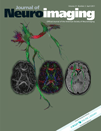Effect of Hyper- and Hypocapnia on Cerebral Arterial Compliance in Normal Subjects
Disclosure: The software for brain monitoring ICM+ (http://www.neurosurg.cam.ac.uk/icmplus) is licensed by the University of Cambridge (Cambridge Enterprise). PS and MC have a financial interest in a part of the licensing fee.
J Neuroimaging 2011;21:121-125.
Abstract
ABSTRACT
BACKGROUND
Changes in partial pressure of carbon dioxide (PaCO2) are associated with a decrease in cerebral blood flow (CBF) during hypocapnia and an increase in CBF during hypercapnia. However, the effects of changes in PaCO2 on cerebral arterial compliance (Ca) are unknown.
METHODS
We assessed the changes in Ca in 20 normal subjects using monitoring of arterial blood pressure (ABP) and cerebral blood flow velocity (CBFV). Cerebral arterial blood volume (CaBV) was extracted from CBFV. Ca was defined as the ratio between the pulse amplitudes of CaBV (AMPCaBV) and ABP (AMPABP). All parameters were recorded during normo-, hyper-, and hypocapnia.
RESULTS
During hypocapnia, Ca was significantly lower than during normocapnia (.10 ± .04 vs. .17 ± .06; P < .001) secondary to a decrease in AMPCaBV (1.3 ± .4 vs. 1.9 ± .5; P < .001) and a concomitant increase in AMPABP (13.8 ± 3.4 vs. 11.6 ± 1.7 mmHg; P < .001). During hypercapnia, there was no change in Ca compared with normocapnia. Ca was inversely correlated with the cerebrovascular resistance during hypo- (R2= 0.86; P < .001), and hypercapnia (R2= 0.61; P < .001).
CONCLUSION
Using a new mathematical model, we have described a reduction of Ca during hypocapnia. Further studies are needed to determine whether Ca may be an independent predictor of outcome in pathological conditions.




